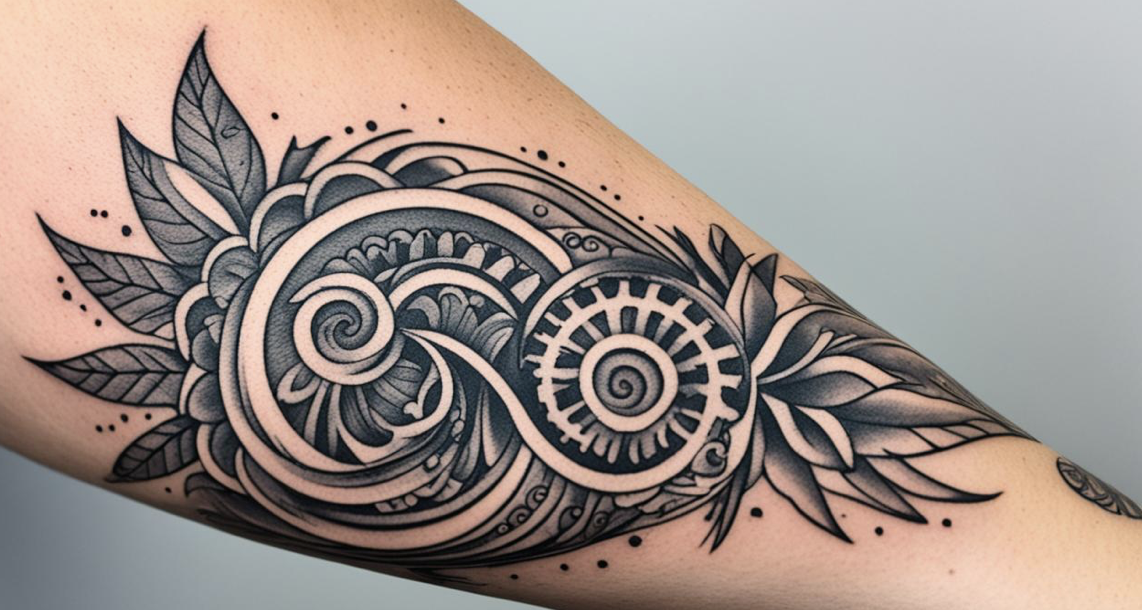Tattoos are meant to last forever, but sometimes people change their minds. Getting rid of a tattoo can be tough, with pain, risks of scars, and infections possible. Yet, with a skilled healthcare pro, laser tattoo removal can safely and effectively remove or lighten unwanted tattoos.
The U.S. Food and Drug Administration (FDA) oversees the lasers for tattoo removal. These lasers break down tattoo ink into bits that the body can clear out. You’ll likely need 6 to 12 sessions for the best results. The number of treatments depends on the tattoo’s size and the ink colors used.
Laser removal is the top choice and most effective way to get rid of tattoos. But, there are other methods like dermabrasion and surgical removal, which come with more risks of scars and uncertain outcomes. On the other hand, at-home tattoo removal creams don’t work as well as professional treatments. They might need months of use to show some results.
Understanding Laser Tattoo Removal
Laser tattoo removal is a popular way to get rid of unwanted tattoos. It uses special lasers that break down the tattoo ink. Then, the body naturally clears out these pieces over time.
How Laser Removal Works
The process targets the tattoo pigment with light energy. Lasers with different wavelengths hit specific ink colors. This is important because some colors like green, red, and yellow are harder to remove than black and blue.
After hitting the ink, the laser breaks it into small pieces. The body then gets rid of these pieces over time. You’ll need several treatments, spaced a few weeks apart, for the best results. This lets the skin heal between treatments.
The number of treatments depends on the tattoo’s size, ink depth, and your skin type. Laser removal is safe when done by experts. But, it might cause some side effects like skin lightening, bleeding, redness, or soreness.
| Laser Type | Wavelength | Ink Colors Targeted |
| Q-switched Nd:YAG | 1064 nm, 532 nm | Black, blue, green |
| Alexandrite | 755 nm | Black, blue, green |
| Ruby | 694 nm | Black, blue, red |
Laser tattoo removal is safer and more effective than other methods. But, it has its challenges. The tattoo’s age, size, color, and your skin type can affect how well it works and how many treatments you need.
Tattoo Removal Options
Laser tattoo removal is the top choice for safely removing unwanted ink. But, there are other methods for those looking for alternatives. It’s important to know the good and bad of each to pick the best one for your needs.
For those considering removing an unwanted tattoo, Brooklyn tattoo removal services offer safe and effective solutions using advanced laser technology to help you achieve clear skin with minimal risks.
Surgical Tattoo Removal
Surgical removal means numbing the area and cutting out the tattoo. Then, the skin is stitched back together. This method works, but it leaves scars. Recovery takes longer than other ways.
Dermabrasion Tattoo Removal
Dermabrasion uses a device to sand down the tattooed skin. This lets the ink fade away. But, it’s not as reliable as laser treatments. There’s a bigger chance of scars and skin color changes.
At-Home Tattoo Removal Methods
The FDA warns against using at-home tattoo removal creams and kits. They’re not safe or effective and can harm the skin. These products are not recommended because they lack the skill and precision of professional treatments.
Laser tattoo removal by a pro is the safest and most dependable way to remove a tattoo. Even though other methods might be cheaper, they’re riskier and may not work as well.
Conclusion
Removing an unwanted tattoo can be tough, but modern laser tech and skilled doctors make it possible. Laser treatments are top-notch because they break down tattoo ink safely. Other methods might not work as well and could be risky.
If you want to remove a tattoo, talk to a dermatologist. They can explain your options and help you pick the best one for your tattoo and skin. With the right treatment, you can get rid of an unwanted tattoo and have clear, fresh skin.
More people are looking to remove tattoos these days, and quality-switched lasers are key for doing it right. But, doctors often see problems and side effects from tattoos removed by non-experts. It’s crucial to get professional help to get good results and avoid risks.
FAQ
What is the most common and effective method for removing unwanted tattoos?
Laser tattoo removal is the top choice for getting rid of unwanted tattoos. It uses lasers that are cleared by the FDA for use by doctors. The laser breaks down the tattoo ink into tiny pieces that the body can clear over time.
How does laser tattoo removal work?
Laser tattoo removal uses lasers to target and break down tattoo ink in the skin. The laser energy shatters the ink into smaller pieces. These pieces are then cleared by the body’s immune system. Different lasers are used for different ink colors, with some colors like green and red being harder to remove.
How many treatments are typically required for laser tattoo removal?
You usually need several laser treatments for tattoo removal, spaced weeks apart for healing. The number of treatments depends on the tattoo size, ink color, and your skin type. Typically, 6-10 treatments are needed to fully remove a tattoo.
Are there any risks or side effects associated with laser tattoo removal?
Laser tattoo removal is safe when done by an experienced provider. But, it can cause side effects like skin lightening, bleeding, redness, or soreness. These effects are usually short-lived. There’s a small chance of scarring, but it’s rare with proper procedure.
Are there any alternative tattoo removal methods besides laser?
Yes, besides laser, there are surgical removal and dermabrasion for tattoo removal. Surgical removal cuts out the tattooed skin and stitches it back. Dermabrasion sands down the tattooed skin to help the ink fade. But, these methods are riskier and less predictable than laser removal.
Are at-home tattoo removal kits and creams effective?
The FDA advises against using at-home tattoo removal creams and kits. They’re not safe or effective and can irritate or damage your skin. For safe and effective results, always have a qualified healthcare professional do the removal.








